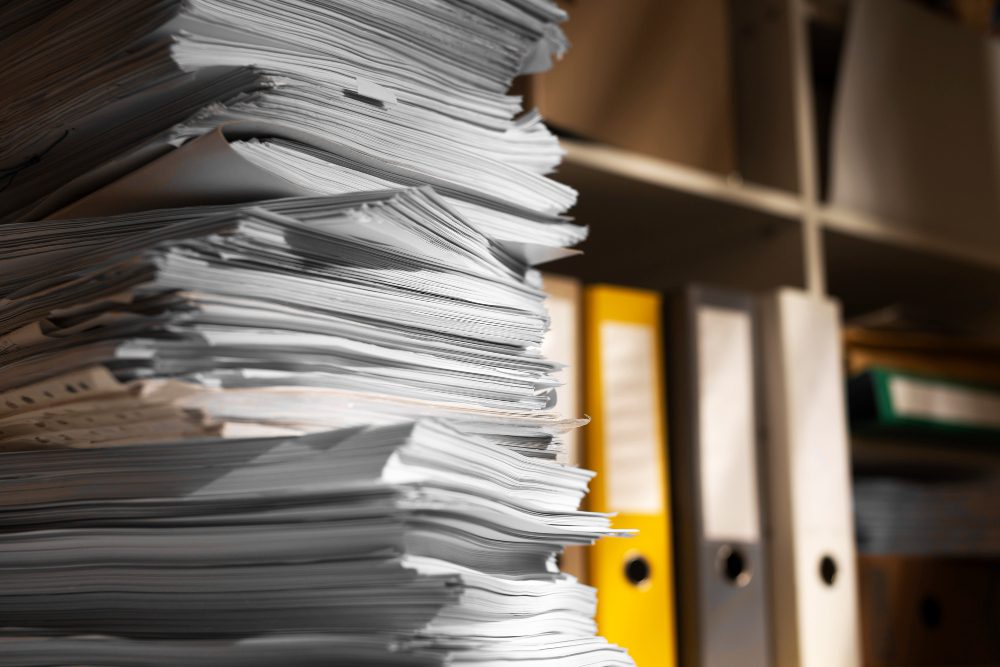The paper you choose for your printing project can be just as important as the design itself. The right paper enhances visuals, adds texture, and even influences how the final piece is perceived.
Whether you’re printing flyers, business cards, posters, or brochures, selecting the right paper stock can make all the difference. In this guide, we’ll explore everything you need to know about paper types, thickness, weight, and finishes—using the Australian GSM system—to help you make the best choice for your project.
Understanding Paper Weight & Thickness
In Australia, paper weight is typically measured in grams per square metre (gsm). This refers to the weight of a single sheet of paper measuring one square metre. However, weight alone doesn’t determine thickness or stiffness. Different paper types, coatings, and manufacturing processes all influence how a paper feels and performs.
A general rule is that coated paper stocks tend to be thinner than uncoated stocks of the same weight, as coatings compress the fibres. This is because the coating adds weight without necessarily adding as much bulk.
Furthermore, the way a paper is made influences its stiffness. Two papers at the same GSM might feel different in your hand – one could be stiffer and more rigid, while the other is softer and more flexible. This “feel” is important to consider depending on the intended use of the printed material. For instance, a business card might benefit from a stiffer stock, while a brochure might be fine with a slightly softer one.
Common gsm ranges and their uses include:
- 80-100 GSM – Standard office paper, suitable for everyday printing, letters, and reports.
- 120-150 GSM – Ideal for high-quality flyers, posters, and professional documents.
- 170-200 GSM – A premium weight often used for brochures and high-end flyers.
- 250-300 GSM – A thicker option suited for postcards, premium brochures, and invitations.
- 350-450 GSM – The thickest standard stock, used for business cards, presentation folders, and packaging.
Heavier stocks provide durability and a more premium feel but may require specialised printing equipment.
Coated vs. Uncoated Paper
Paper stock can also be classified based on its finish:
- Coated Paper: Available in gloss, satin, or matte finishes, coated paper enhances colour vibrancy and provides a smooth surface for detailed images and sharp text. It’s ideal for marketing materials, product catalogues, and high-end brochures.
- Uncoated Paper: Provides a more natural, textured feel and is absorbent, making it perfect for stationery, business cards, and items where writing needs to be added after printing.
Textured and Specialty Papers
For projects that require a unique look and feel, specialty papers can add a tactile and visual appeal:
- Linen Paper (120-350 GSM) – Features a fine, woven texture, commonly used for invitations, corporate stationery, and high-end business cards.
- Felt Paper (200-350 GSM) – A soft, fabric-like texture that absorbs ink well, perfect for greeting cards and formal announcements.
- Vellum (90-150 GSM) – Either a translucent overlay (like tracing paper) or a rough-textured stock, used for elegant invitations and event programmes.
- Kraft Paper (100-350 GSM) – Made from recycled fibres, kraft paper has a rustic, organic look, making it popular for eco-friendly branding and packaging.
Recycled Paper: An Eco-Friendly Choice
Choosing recycled paper is a great way to reduce your environmental impact. Recycled paper is made from post-consumer waste, reducing the need to harvest virgin trees. It also uses less energy and water to produce compared to virgin paper.
At Agility Print, we use EcoStar coated and uncoated papers as our primary recycled stock. EcoStar is made from 100% post-consumer waste and is FSC-certified, meaning it meets rigorous environmental and ethical standards.
Choosing the Right Paper for Your Print Job
The function of your print project should guide your choice of paper stock. Here are some general recommendations:
- Business Cards: 350-450 GSM coated or uncoated stock.
- Flyers & Brochures: 150-200 GSM coated for a polished look, or uncoated for a natural feel.
- Postcards & Invitations: 250-350 GSM with gloss or matte coating for durability.
- Letterheads & Stationery: 100-120 GSM uncoated for easy writing.
- Posters: 150-200 GSM for indoor use, 200-250 GSM for outdoor durability.
Why Paper Choice Matters
Selecting the right paper stock impacts the perception of your brand, the readability of your design, and the overall durability of your prints. The right choice can enhance the quality of your materials and create a lasting impression on your audience.
At Agility Print, we understand the importance of high-quality printing and the role that paper stock plays in achieving the perfect finish. Whether you need business cards, brochures, posters, or packaging, we offer a wide range of premium paper stocks tailored to your needs.
Need expert advice on choosing the right paper for your project? Contact us today and let’s bring your vision to life!

